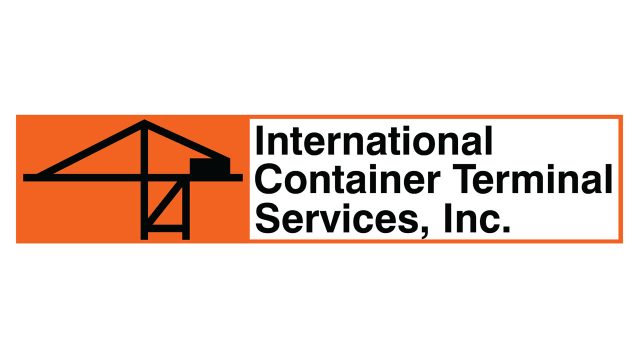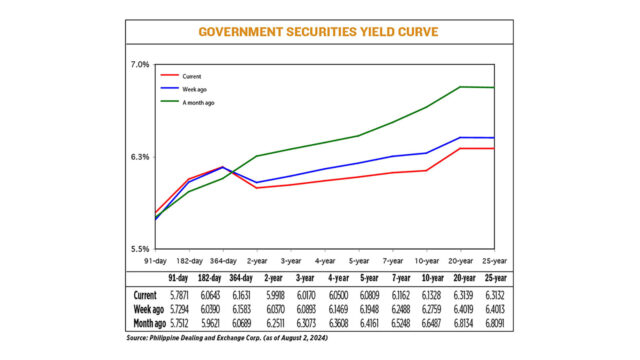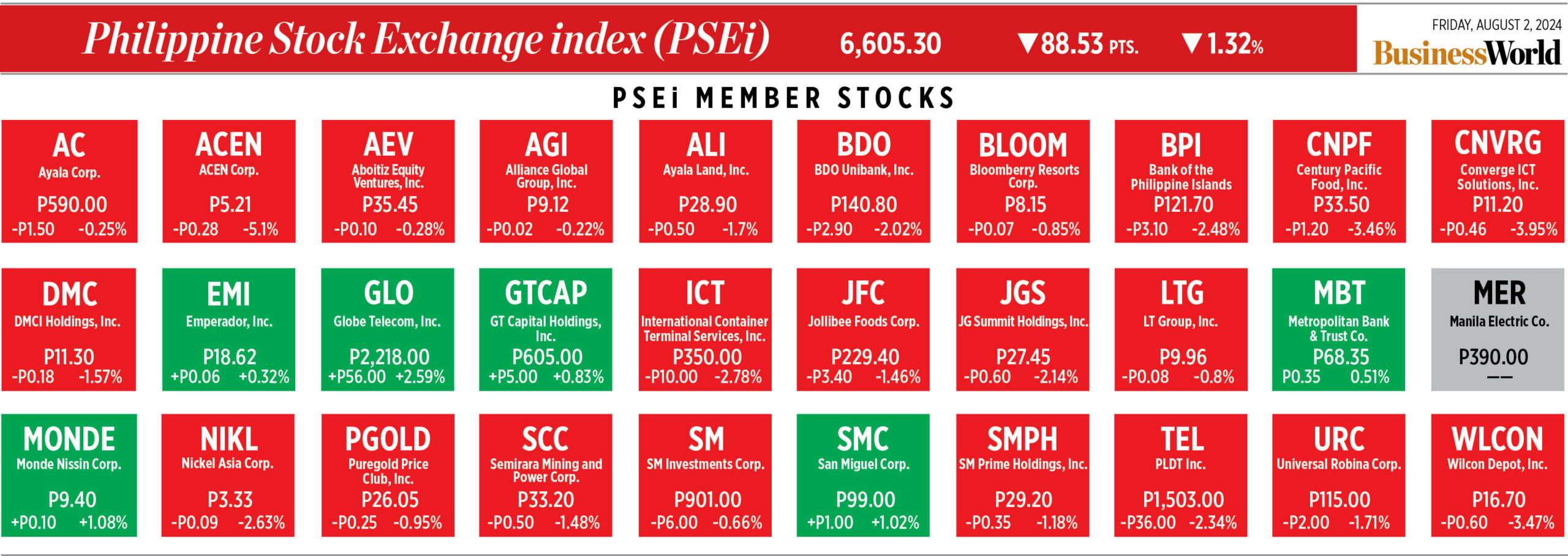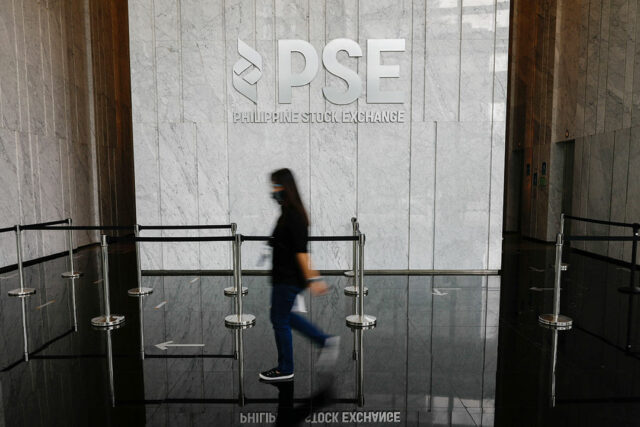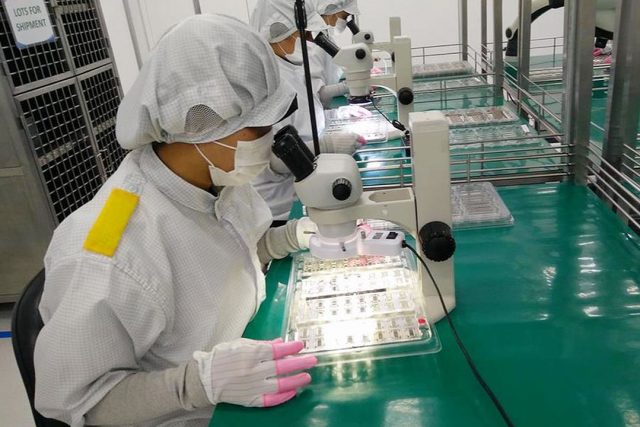ICTSI shares up on new equipment news, Q2 earnings prospects
RAZON-LED International Container Terminal Services, Inc. (ICTSI) was the most actively traded stock last week, with its share price rising following news of the commissioning of three new cranes and the commencement of its Berth 8 expansion at its Manila terminal.
Data from the Philippine Stock Exchange showed that ICTSI was the most actively traded stock in terms of value turnover, with P2.84 billion worth of 8.04 million shares exchanging hands from July 29 to Aug. 2.
The listed port operator’s shares closed at P350 each on Friday, 1.4% lower than its July 26 close of P355. Year to date, the stock has increased by 41.8%.
Rastine Mackie D. Mercado, research director at China Bank Securities Corp., said that positive global macroeconomic trends, such as expectations of a soft landing for the US economy and the prospects of interest rate cuts from the US Federal Reserve and the Bangko Sentral ng Pilipinas, have supported the listed port operator’s price action this week.
Similarly, Jeff Radley C. See, head trader at Mercantile Securities Corp., noted that bullish sentiment has lifted the index, as the US Fed is likely to begin rate cuts in September 2024.
“The [second-quarter] earnings report is what investors are anticipating that the company will be reporting good earnings,” Mr. See said in a Viber message.
Last week, the Enrique K. Razon, Jr.-led company saw developments including the full operation of its three new quay cranes at Manila International Container Terminal (MICT).
In a statement, MICT Chief Executive Officer Christian L. Lozano said that this acquisition is a significant step for MICT’s expansion and modernization. The addition of quay cranes will enable more efficient handling of cargo loads, leading to faster vessel turnaround times and improved operations overall.
ICTSI also stated that the commissioning of these three cranes demonstrates MICT’s commitment to providing the highest levels of port services and enhancing the terminal’s capacity to handle the growing demands of modern container shipping.
MICT is one of the three terminals in the Port of Manila and has the largest quay crane fleet with 18 units. The additional cranes have improved operational efficiencies, allowing the terminal to better manage peak periods and high cargo volumes, ensuring smoother and more predictable operations for all stakeholders, ICTSI also said in its statement.
Additional reports show that the Manila terminal has begun the second phase of its Berth 8 expansion, which will include building a 300-meter wharf and a 10-hectare container yard. Upon completion, the expansion will increase MICT’s capacity by 200,000 twenty-foot equivalent units (TEUs) to 3.5 million TEUs.
Berth 8 will be equipped with three quay cranes to efficiently handle ultra-large container vessels with capacities of up to 18,000 TEUs. These new cranes are scheduled to arrive in 2027, ICTSI said.
“The second phase of development for MICT’s Berth 8 will increase the terminal’s throughput capacity by 6%, which should further support ICT’s thrust to expand volumes,” Mr. Mercado said in an e-mail.
He added that the commissioning of three new quay cranes should benefit ICTSI in terms of operational efficiency, increased volume, and potential margin improvements.
In the first quarter, ICTSI reported a 35.7% year-on-year rise in its attributable net income to $209.88 million. Its consolidated revenues also grew by 15.4% to $685.19 million.
Mr. Mercado estimates that core earnings for the full year 2024 will reach $740 million.
Expectations of continued earnings growth, resulting from volume expansion and robust yields per TEU amidst upward tariff adjustments across its global terminals, could entice investors to consider the port operator, Mr. Mercado said.
“Capacity expansion through either organic or M&A (merger and acquisition) opportunities (i.e., Durban terminal in South Africa, MICT), and attractive dividend prospects given expectations of earnings growth” can also be considered by investors.
“We see current support at P349, while resistance is at P370,” Mr. Mercado said.
For Mr. See, technically speaking, “the chart made a bearish divergence as the price continues to rise but RSI (relative strength index) indicator is showing a decrease in strength.”
He pegged support levels at P388 and P315, while resistance levels at P360, and 373, respectively. — Abigail Marie P. Yraola

